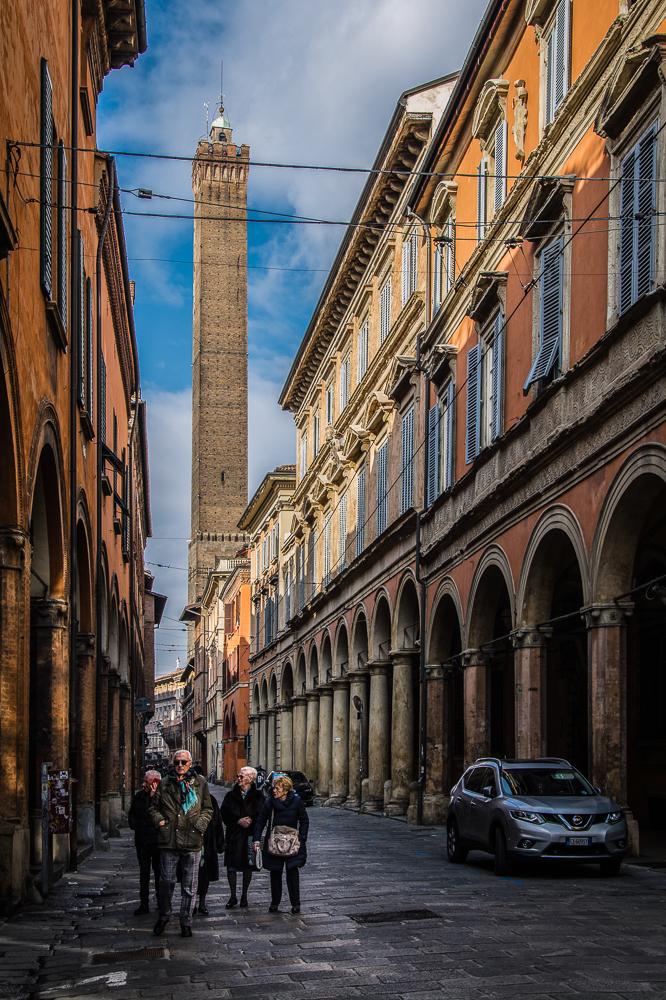
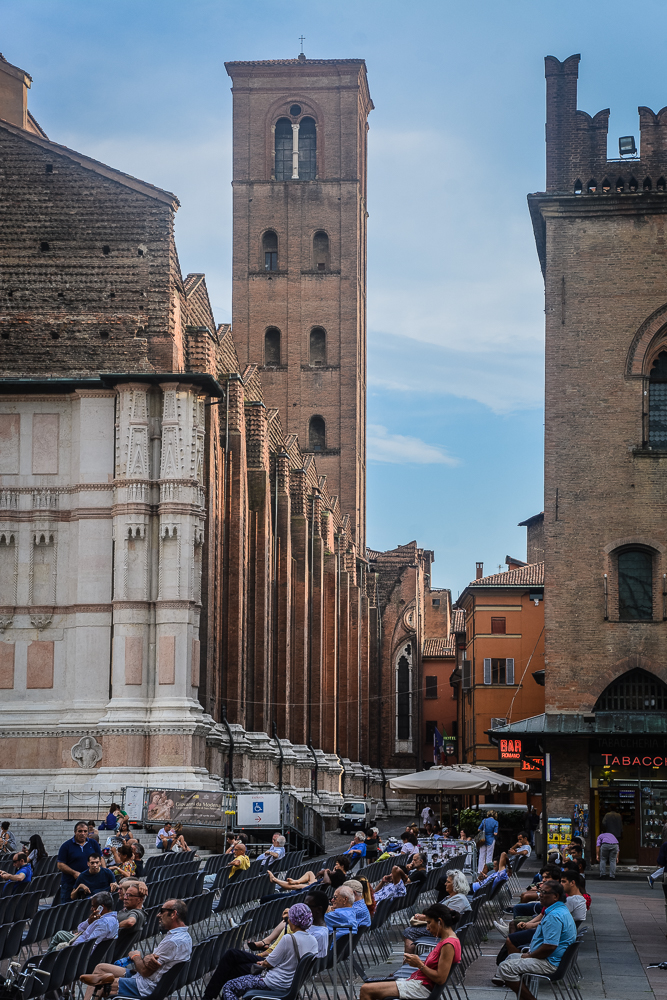
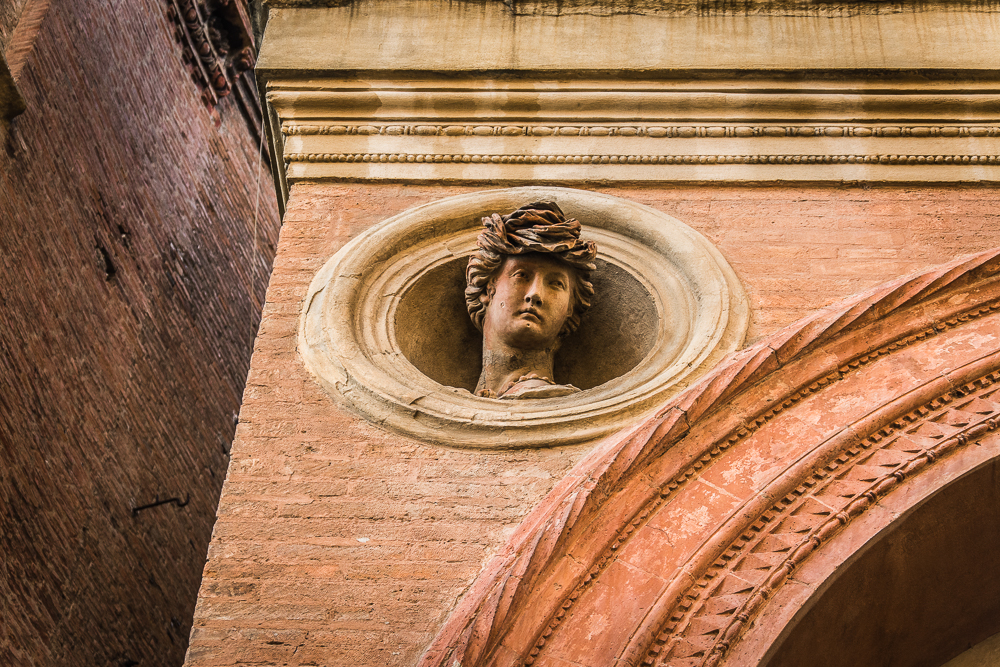
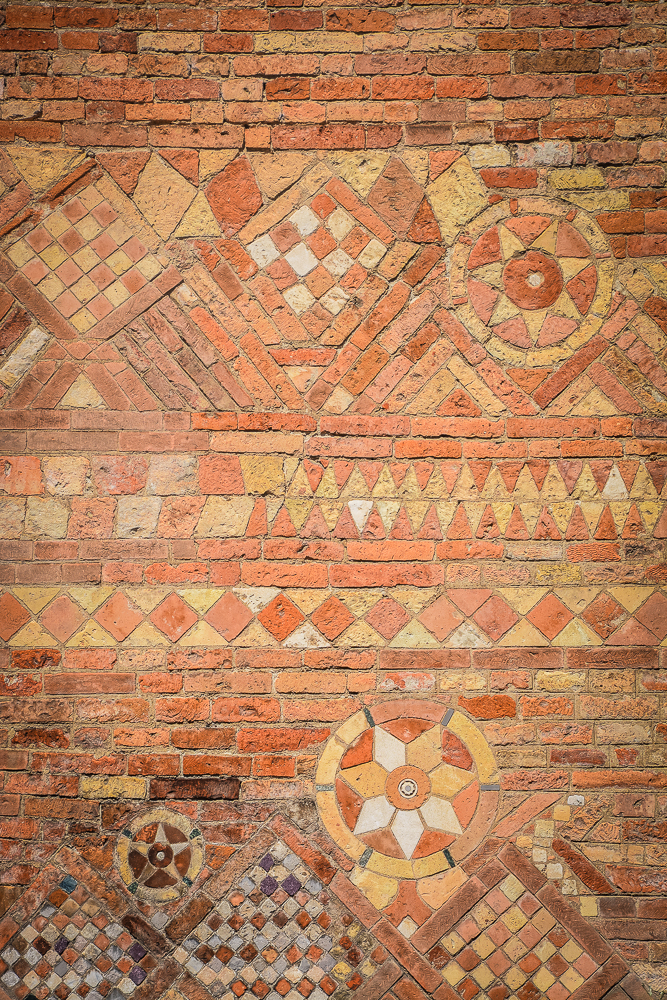
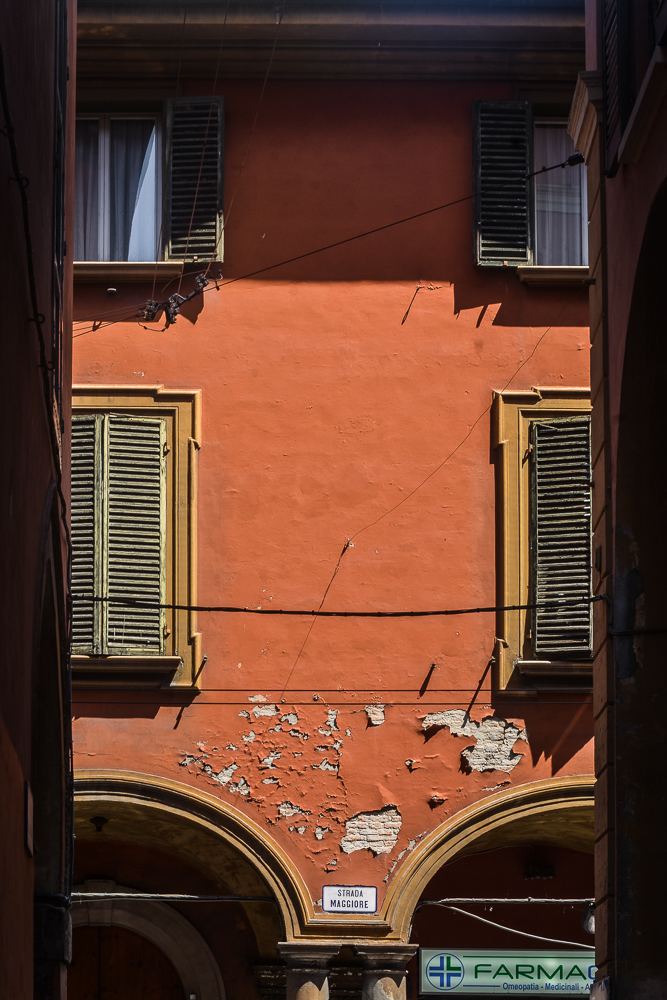
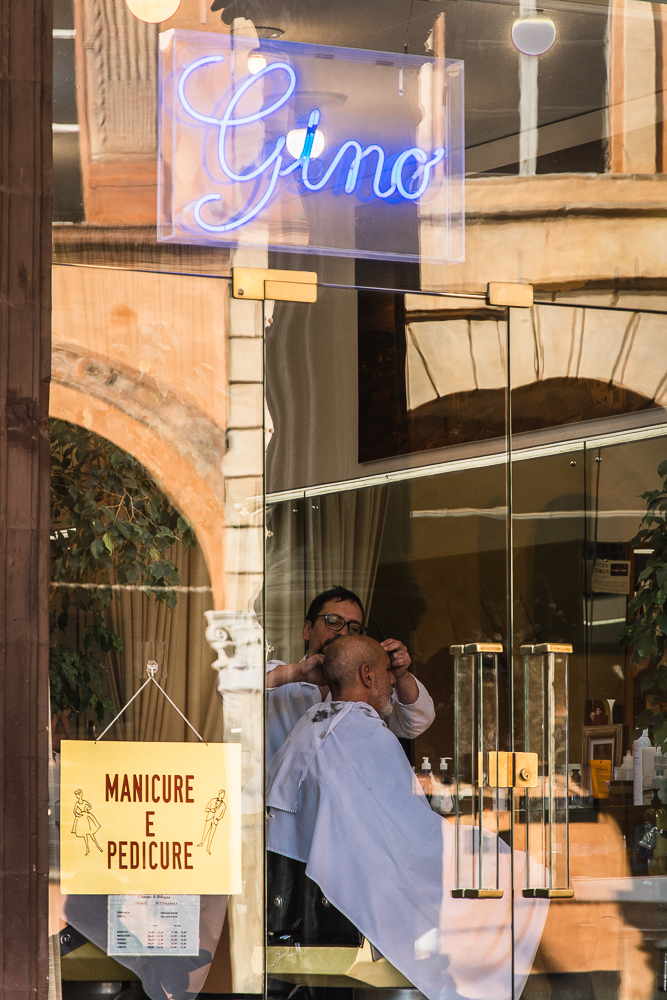
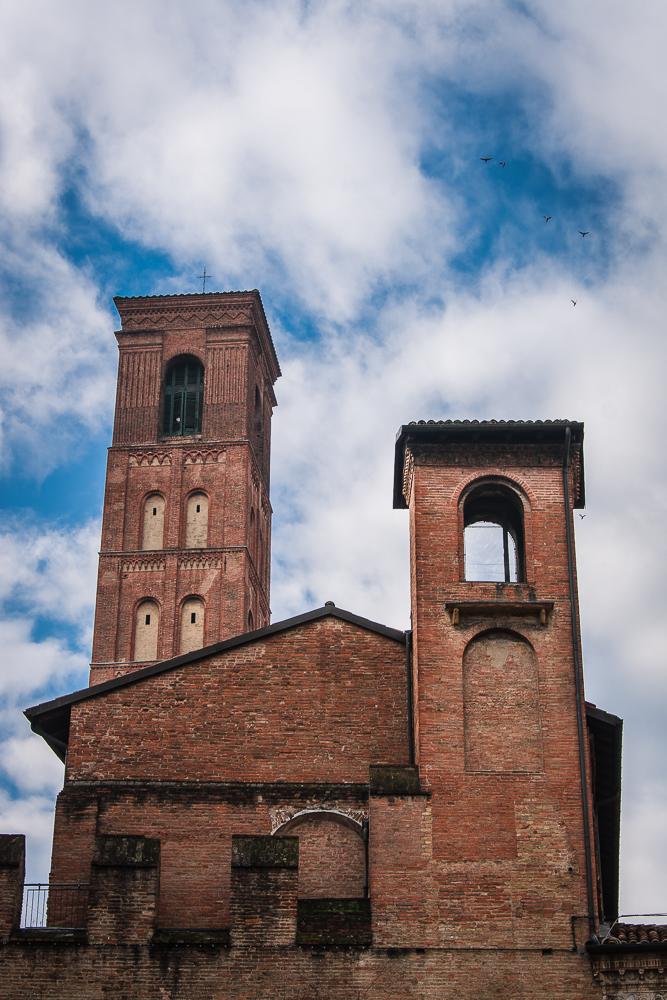
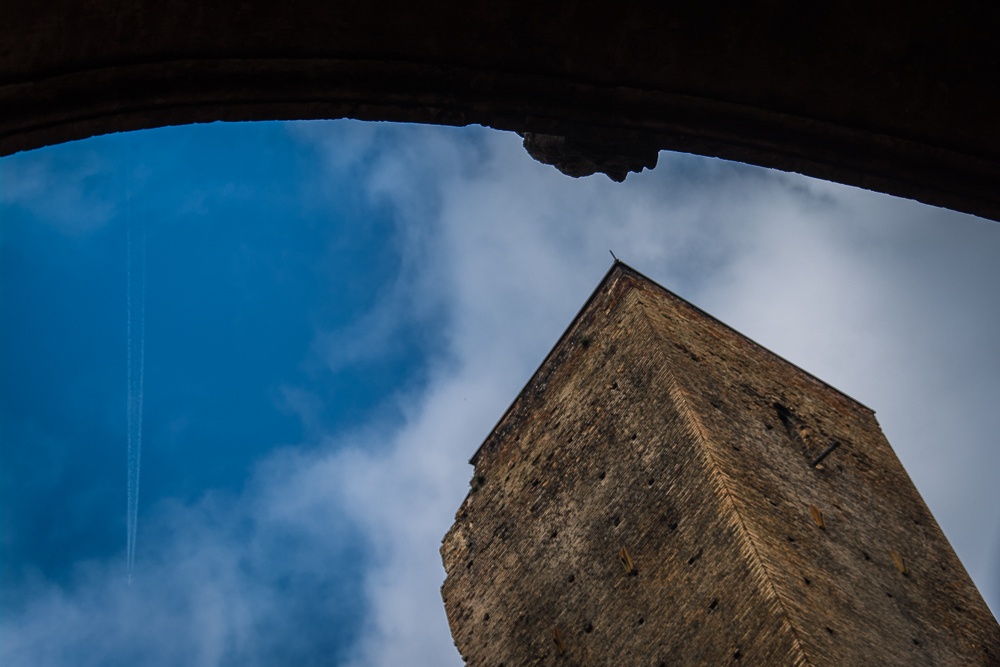
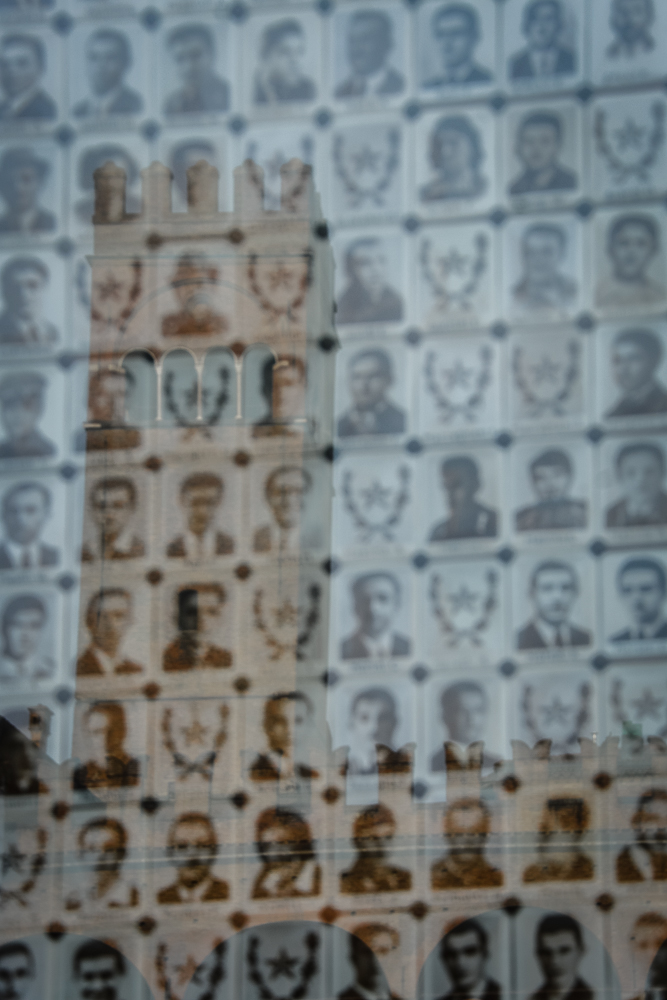
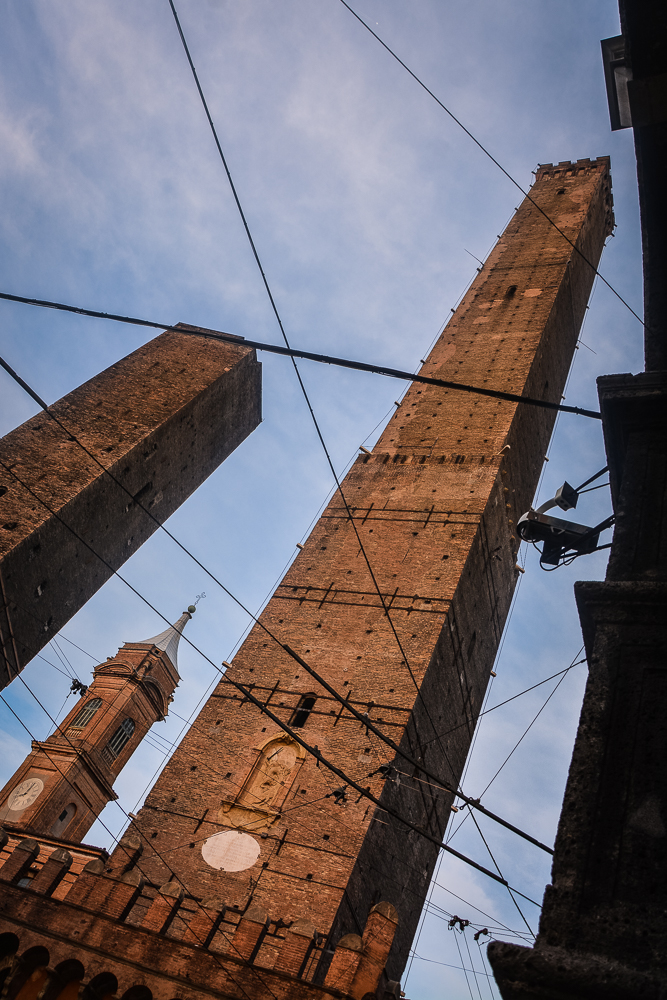
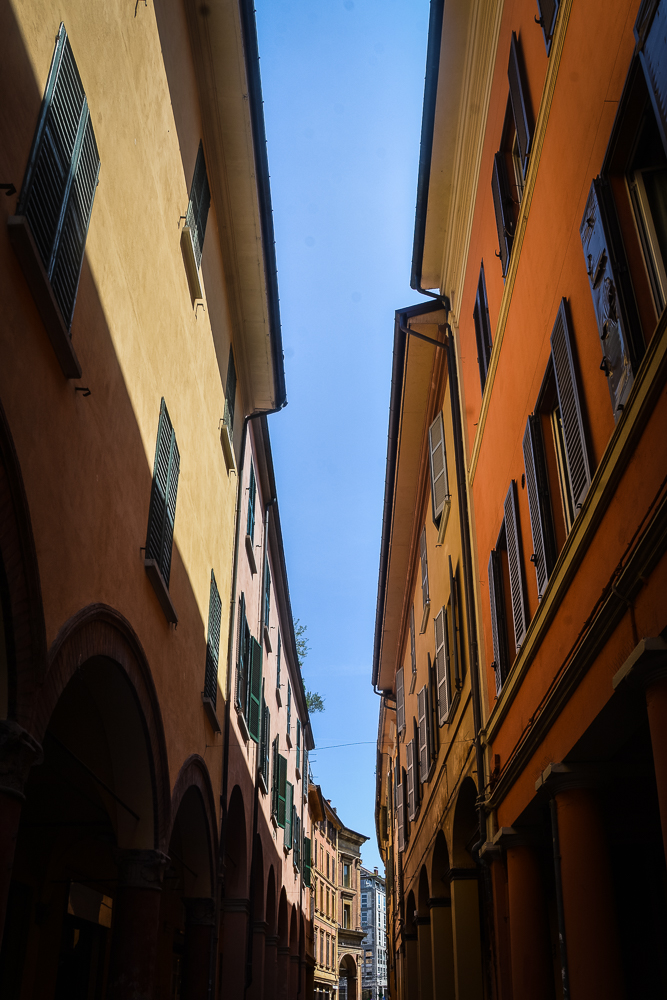
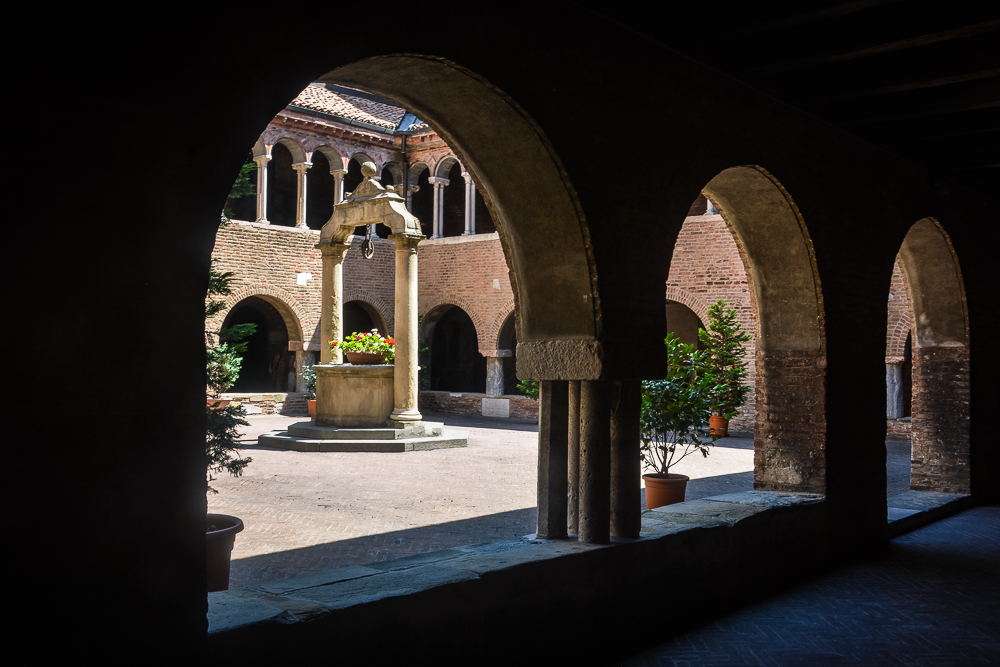
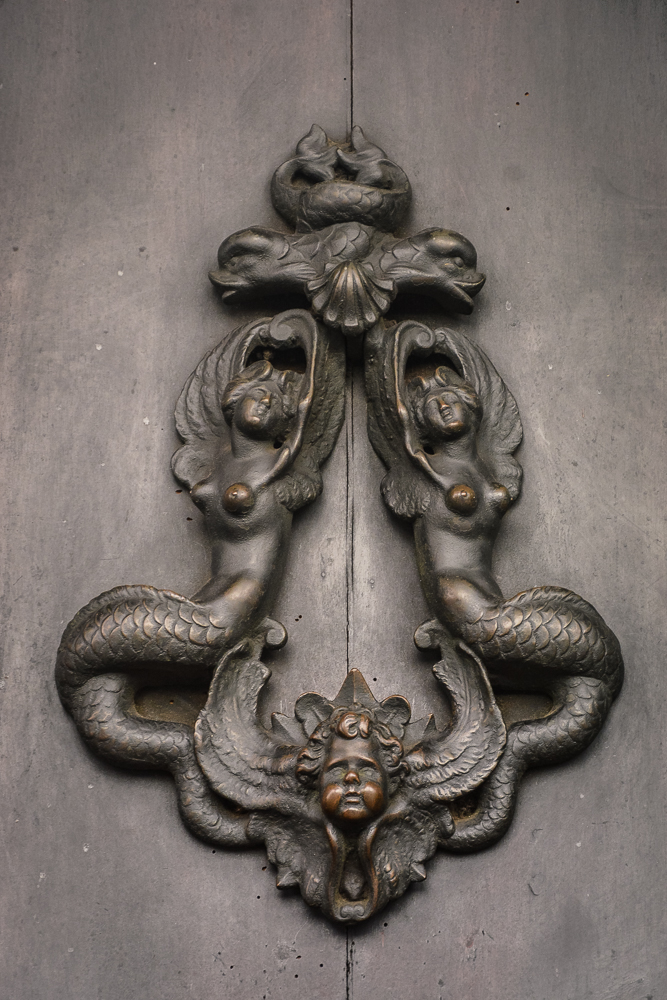
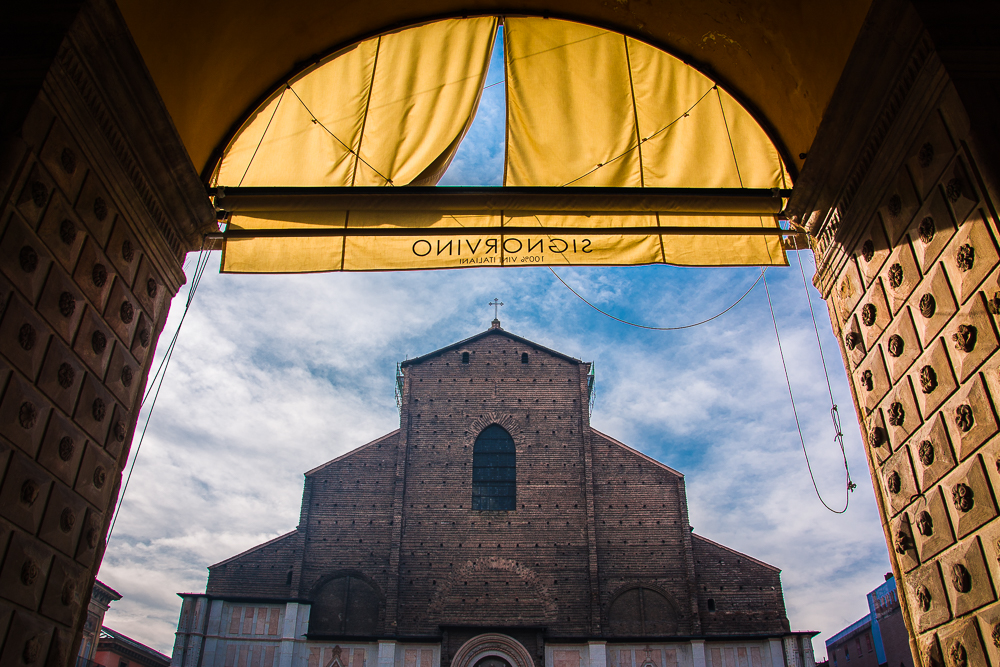
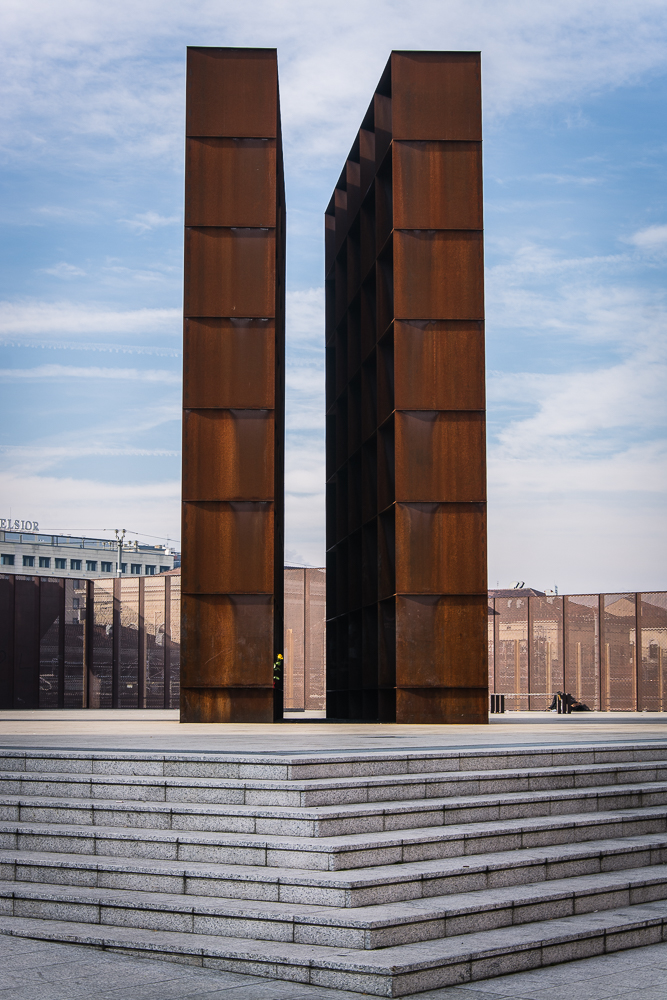
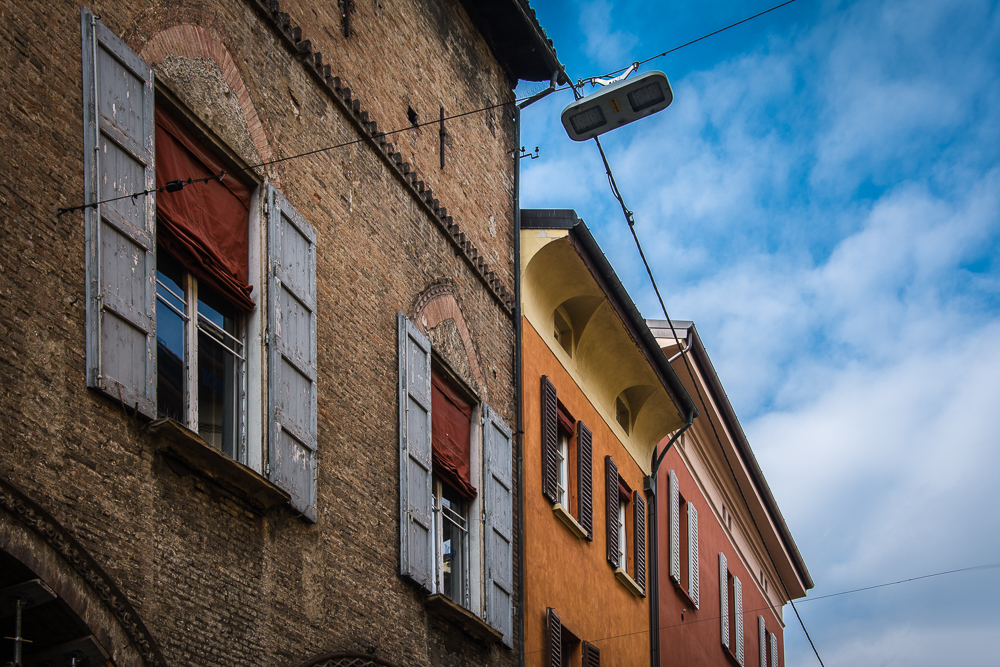
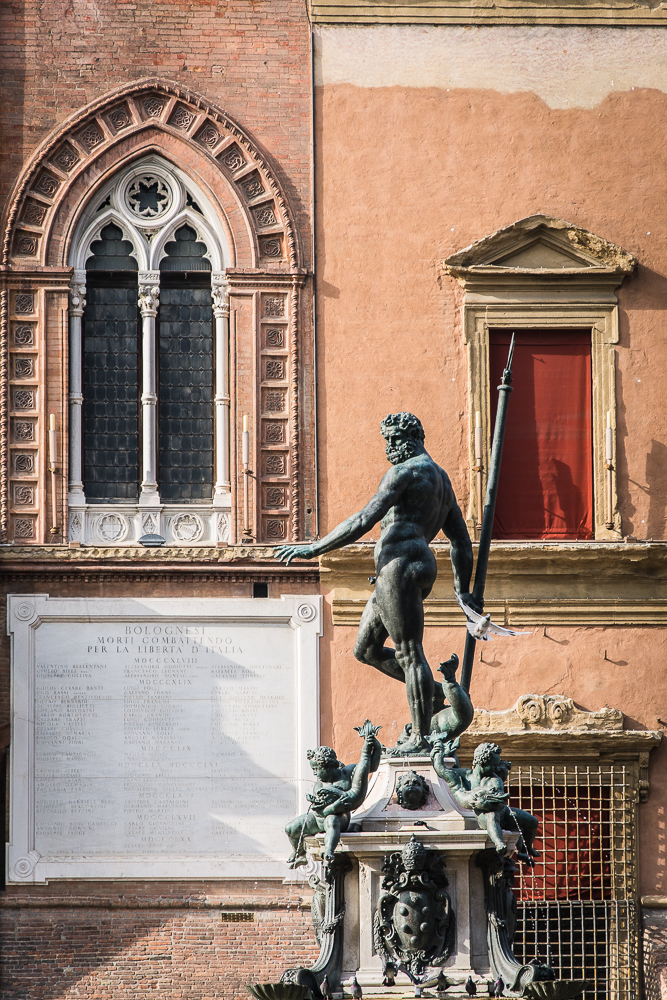
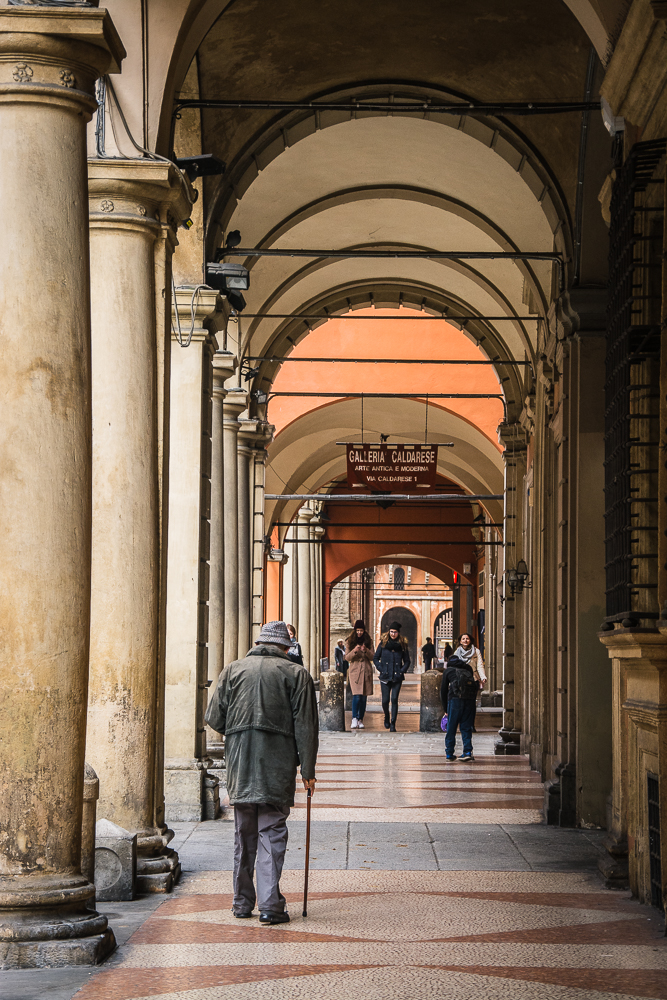
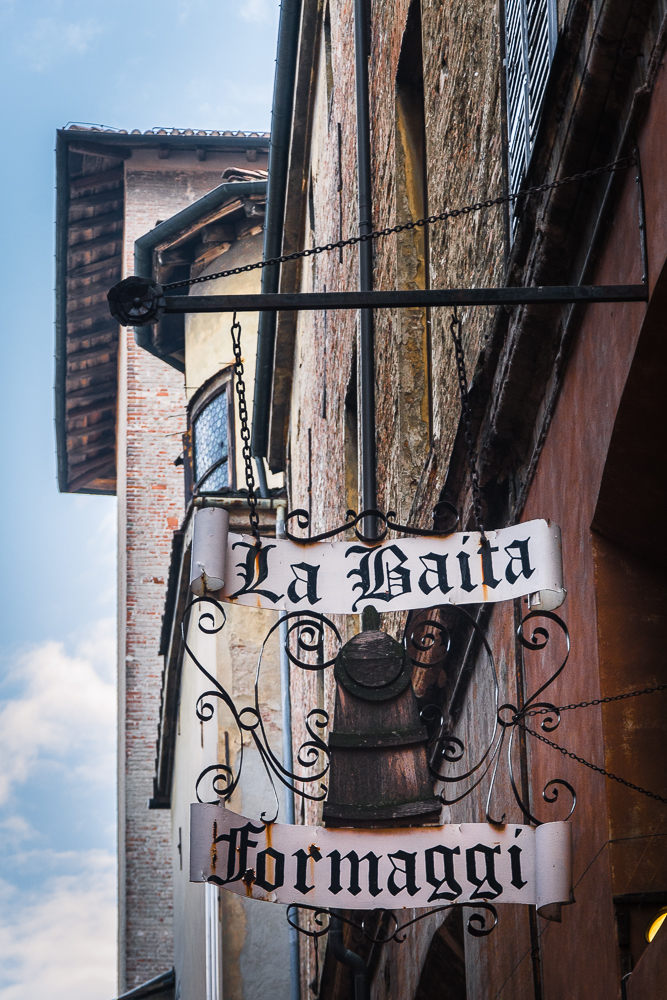

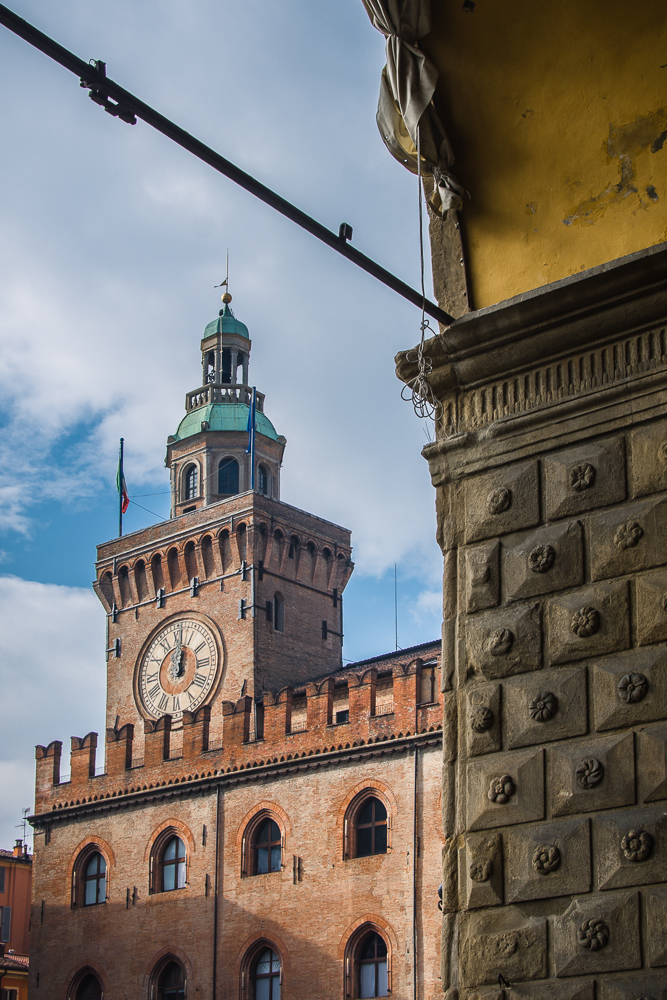

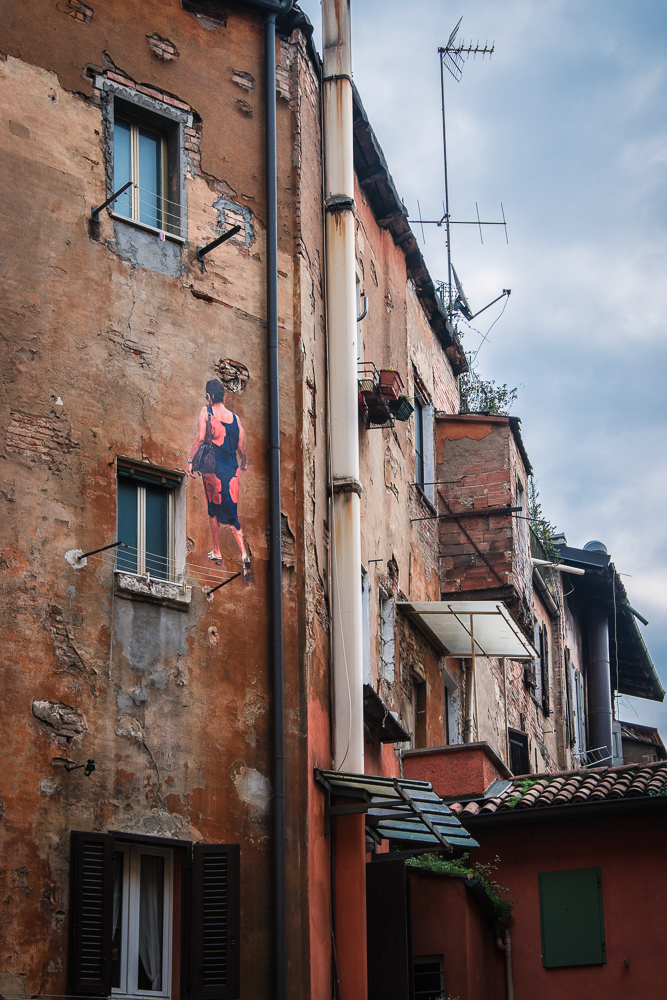
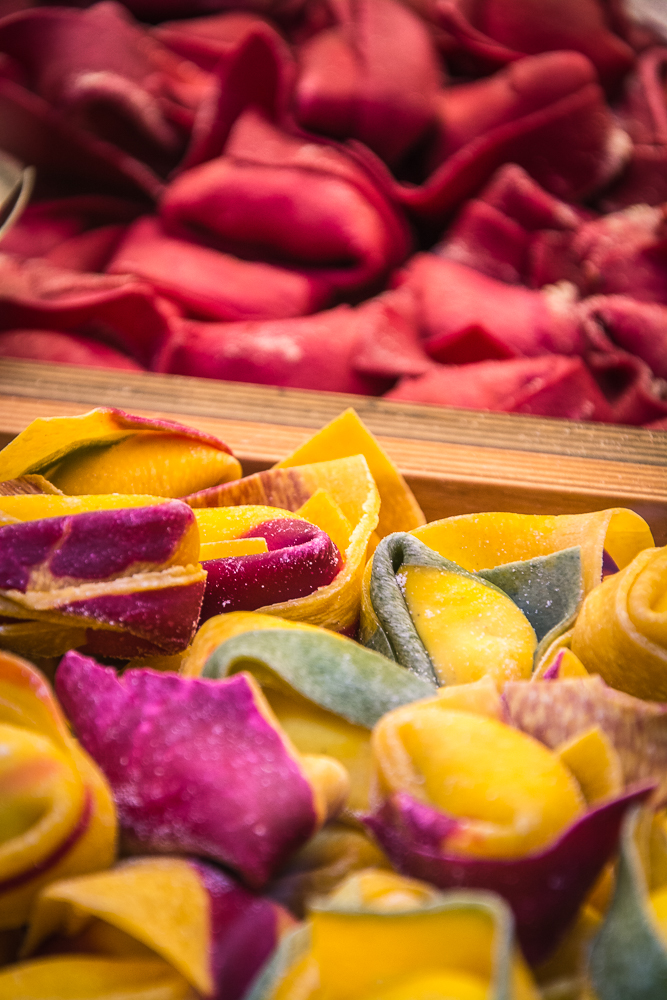
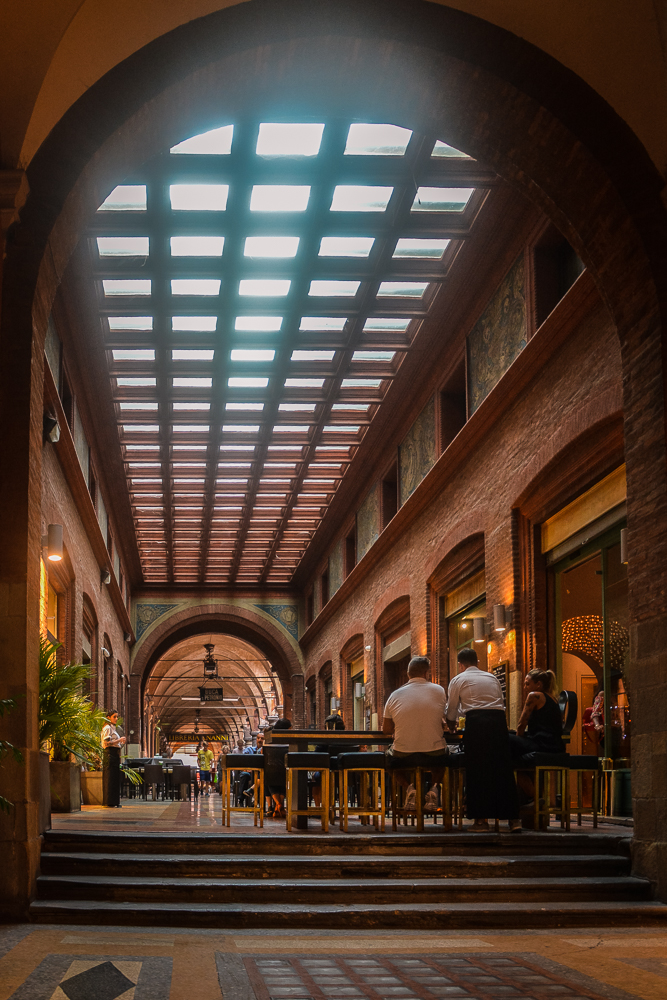
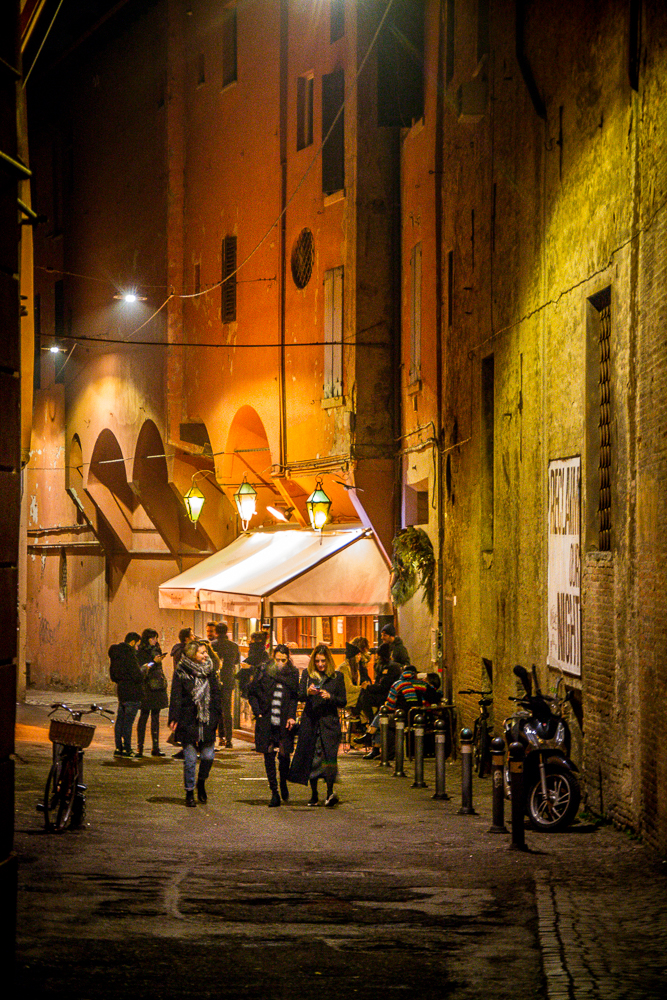
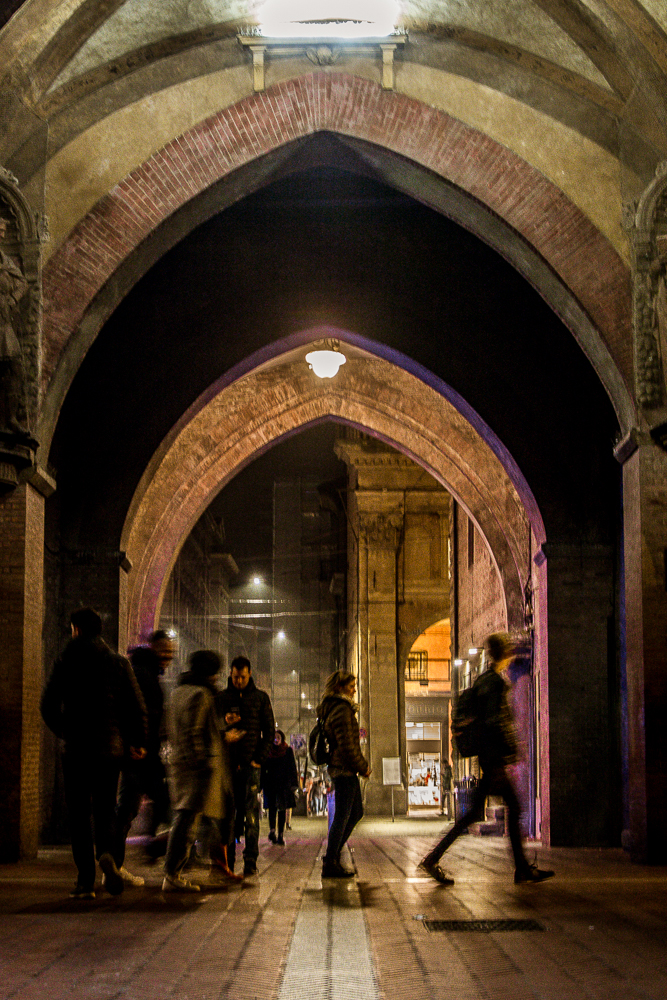
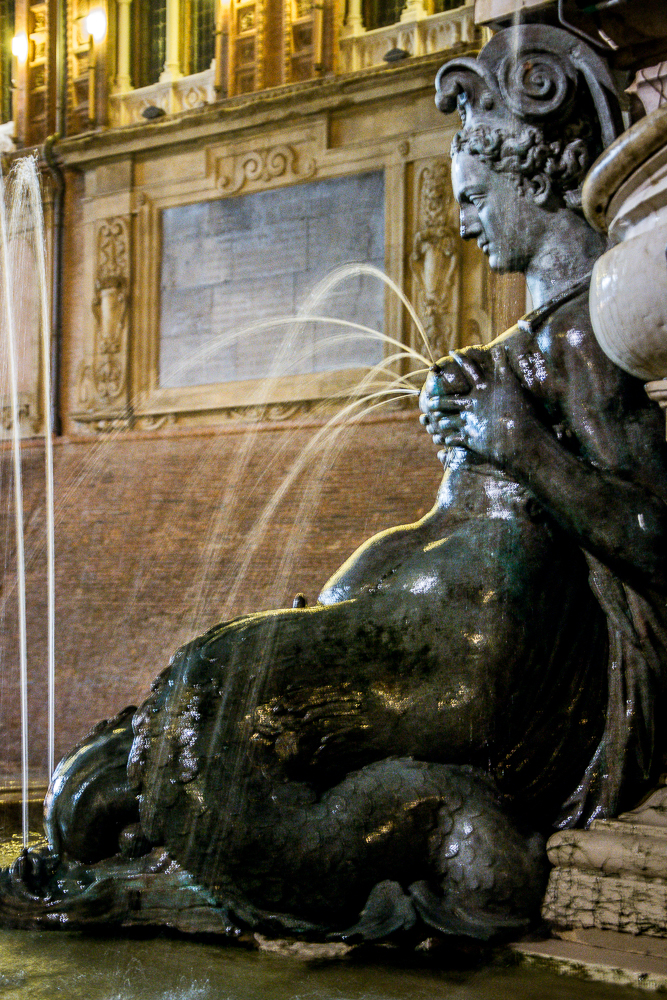
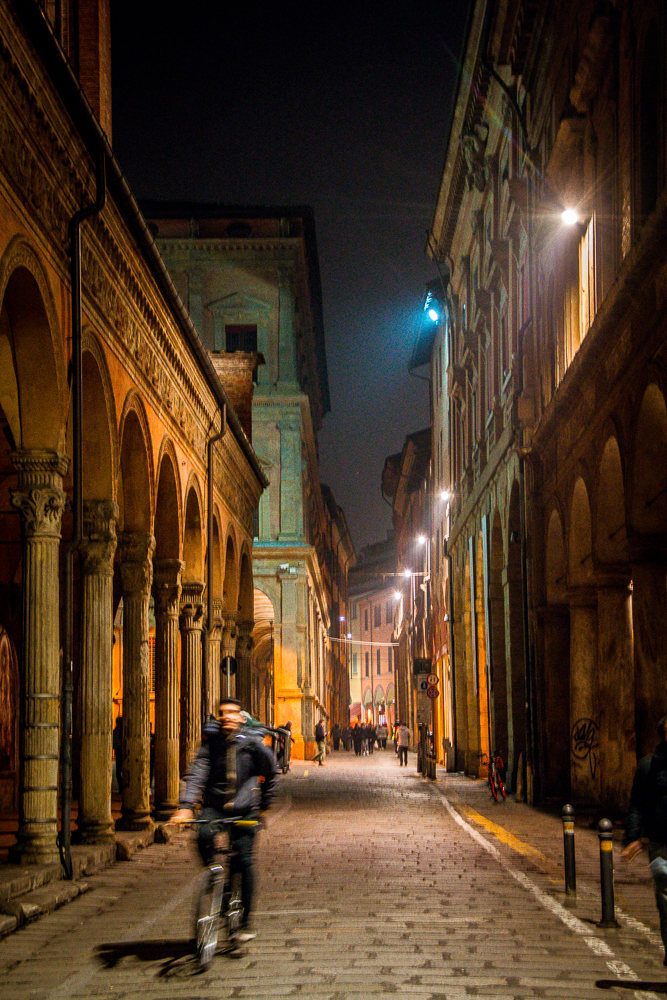
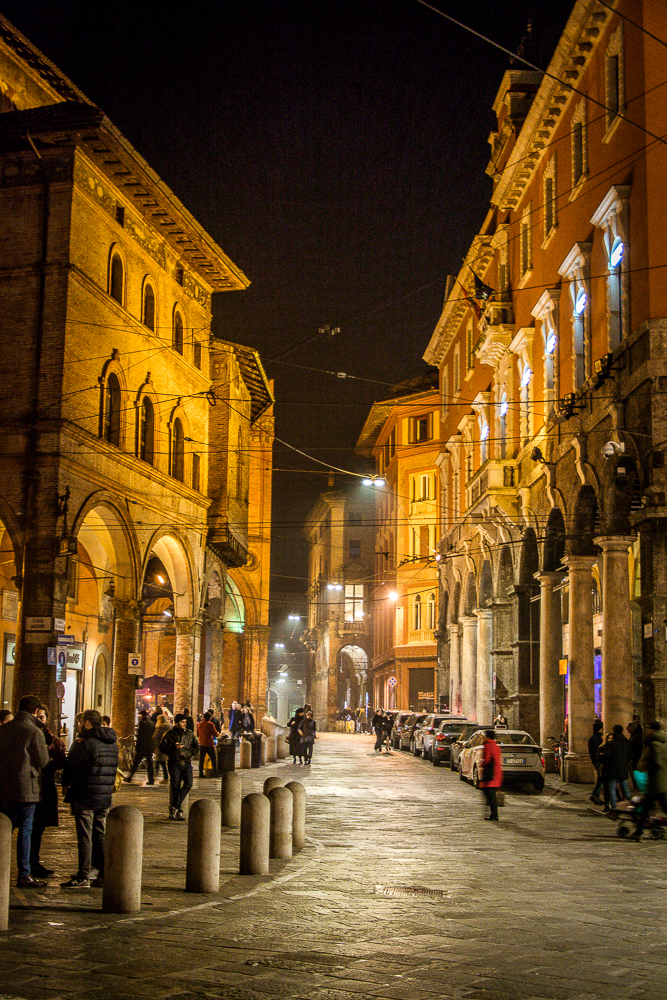
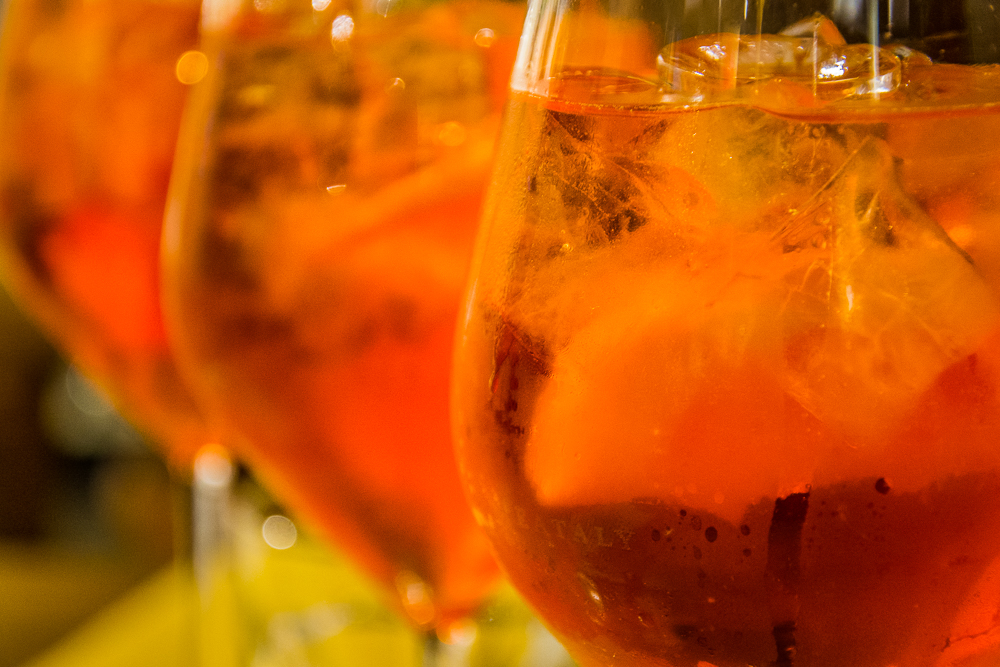
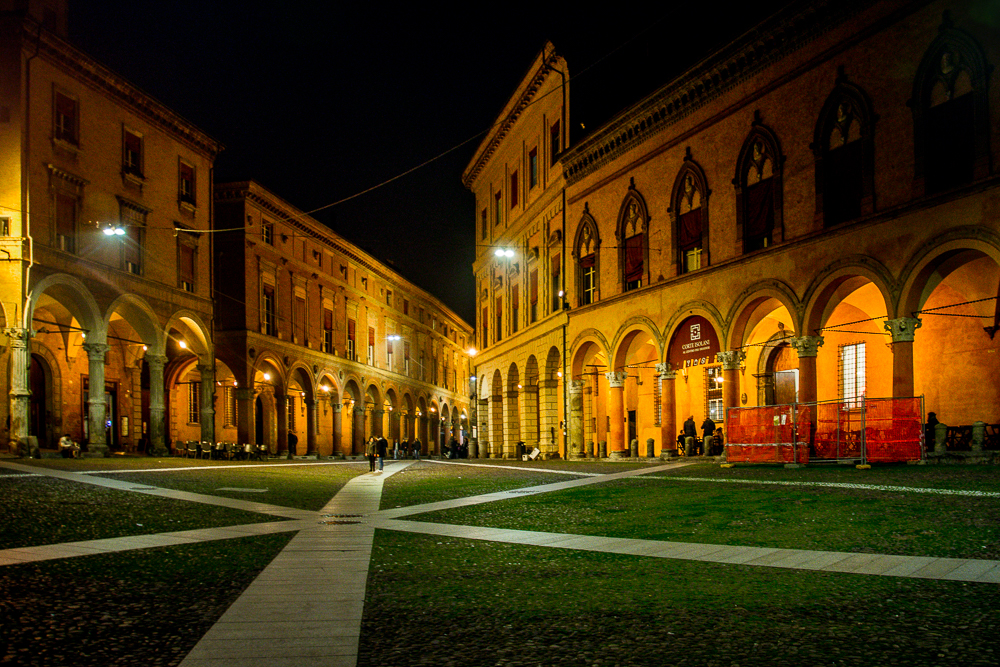
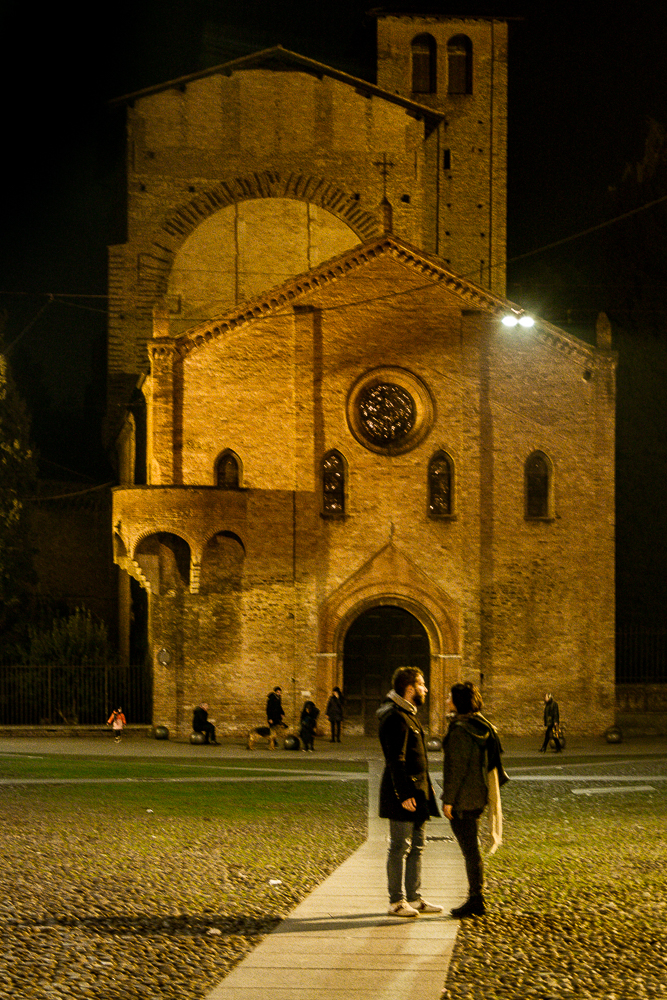
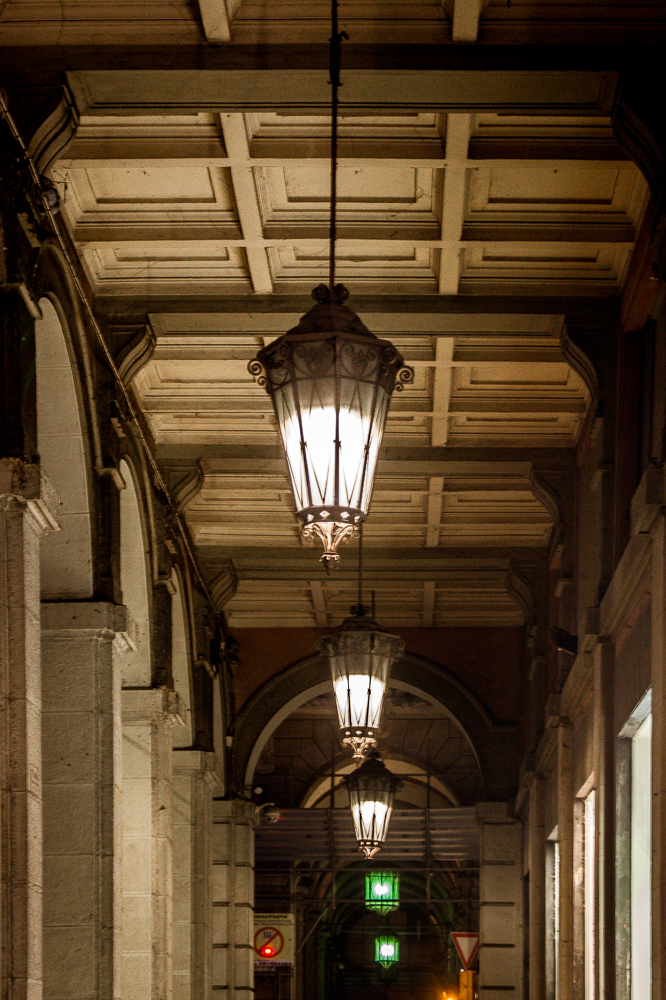
Architecture of Bologna
The Red City of towers and porticos
Mediaeval conflict between secular and spiritual authority had a great impact on the city. Papacy, emperor and Italian city-states were involved in the outside strife. While the Ghibellines (supporters of the empire) and the Guelfs (supporters of the papacy) fought internally. Bologna used to pass from hand to hand many times, as a part of the State of the Church or as a city of the Lombard League. Turbulent history caused construction of many defensive buildings. Whereas resilient development of a Mediaeval commune (12th – 14th century) resulted in demographic growth. Urbanism of the growing city presented a challenge. The independent city was supporting its economy by using local materials, such as selenite1, clay or oakwood. Under the influence of these circumstances, architecture of Bologna formed its characteristic features.
The Two Towers … for a living
In the 12th and 13th century Bologna had to look like a Mediaeval version of Manhattan. In this period, there were around 100-180 residential towers. It is easy to guess that the buildings served as an accommodation and a place of defence. In this way, rich families were protecting themselves against local and outside conflicts.
All the towers were built according to a similar scheme.The structure, raised on pile foundations, had a plan similar to a square. The base was made of a local material – selenite. The representative ground floor connected the upper floors only with easily removable stairs, which were removed in the event of an attack. Thereby households were hiding from the enemies on the higher part of the tower. Lighter construction of rubble masonry2 was applied above the base. A space between double, brick-built walls was filled with hardcore, stones and lime mortar. The thickness of the wall decreased towards the top. Characteristic square holes in the structure served to fix a scaffolding. Dark and narrow towers were not a perfect place to live. With time, they become just a symbol of richness in the race for the highest building.
To make better use of the limited space of the growing city, the towers were demolished or adopted to public functions (e.g. jails or shops). Just 20 of them survived until today. The most famous Two Towers of Bologna are Asinella (97.2 m high) and its crooked neighbour Garisenda (48 m high, 3,2 m angled). We can even find mention of the latter in Dante’s Divine Comedy.
As when one sees the tower called Garisenda
from underneath its leaning side, and then a cloud
passes over and it seems to lean the more,
thus did Antaeus seem to my fixed gaze
as I watched him bend. 3
La Rossa – The Red City
The nickname of Bologna – La Rossa (The Red) is mostly associated with the resistance movement and Italian Communist Party. However, the history of this colour is much older. In the 12th century the independent city placed importance on local resources – clay (bricks and terracotta), selenite, sandstone and oakwood. Natural red hue of the raw materials, especially these made of clay, accented an independence from the Pope (represented by white colour). Terracotta – it. terra cotta means literally “baked earth”. It was used mostly as material of decorative elements for example sculptures, tiles, slates or gutters (sima). Also, many buildings have a characteristic finish of walls. Sagramatura is a technique in which lime plaster with pigments covered the brick in such a way as to preserve the texture of the wall. The best examples of the mentioned decorations are renaissance palaces Palazzo Bolognini Amorini Salina and Palazzo della Mercanzia.
Neo-Gothic architecture of Bologna also referred to mediaeval materials and colours. In this way, for ages, red dominated the historical centre of the city. Nowadays, to prevent consistency and colour scheme, the city introduced the regulations called “Piano di Colore”4. The rules define all acceptable hues of red that are allowed on elevations.
Limitless portico5
By the end of the 13th century Bologna was in the top ten most populated cities of Europe – around 50 000 citizens. There was not enough space for such a population. A difficulty was that wooden structure of buildings hindered upper extensions. Narrow streets limited the width of the houses. Moreover, property tax was dependent on the size of the ground floor. But smart Bolognesi found a way to solve this problem. To increase the space of the building, they started to build light, wooden construction in front of the main facade, but starting from the first floor. Initially the structures had a form of a bay window6 or covered terrace. Very fast, the citizens understood that they can increase the construction even more by supporting columns on the base floor. In this way bay windows transformed into porticos.
Covered passages also had extra advantages – protection from the sun and rain. The city authorities appreciated the usefulness of porticoes, so in 1288 they ordered their construction in front of every house. The regulations determined a minimum height around 2,66 m – a size of a man with a hat sitting on a horse. Nowadays porticos in Bologna have a total length of 38 km. One of the most famous passages starts from the city gate Porta Saragozza and leads to the sanctuary of Madonna di San Luca. The fun fact is that it has exactly 666 arches.
Your next stop in this architectural journey around the city should be Sfolia Rina, where I have tried the best designed ravioli. Also I would like to thank Giulia, who answered with great enthusiasm for all my questions about the city.
Travel Palette of Bologna
Annotations:
1Varieties of gypsum, known also as a moonstone.
2Rubber masonry – it. muratura a sacco, la. opus coementicium.
3Divine Comedy, Inferno, XXXI, 136-140. Translation by Robert Hollander and Jean Hollander.
4Piano di Colore – it. colour plan.
5Portico – la. porticus “colonnade, covered passage”. Open part of the base floor limited by at least one row of columns, which support upper levels or roof.
6Bay window is a protruding part of the main elevation, with a separated roof, that starts from the level of the first floor.
